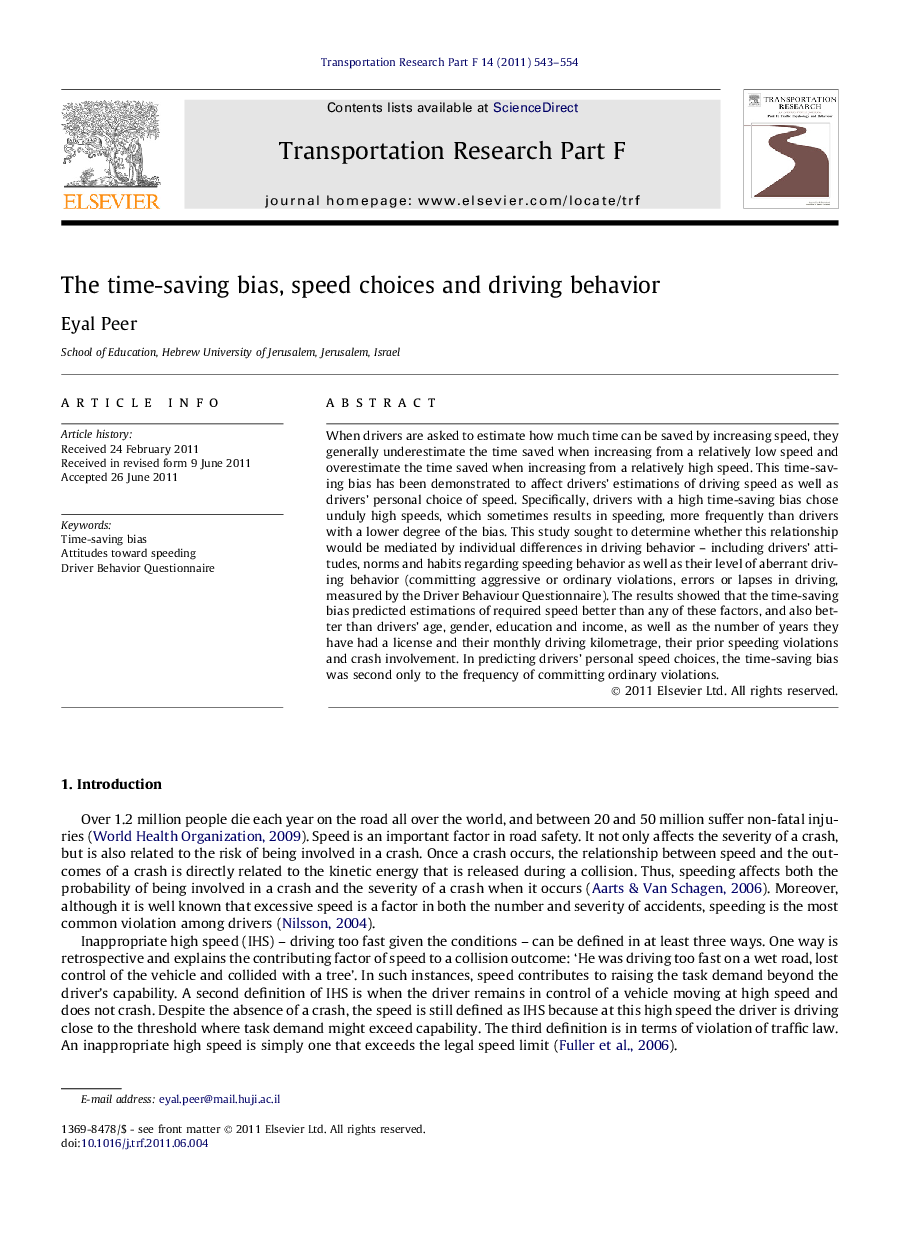| کد مقاله | کد نشریه | سال انتشار | مقاله انگلیسی | نسخه تمام متن |
|---|---|---|---|---|
| 897883 | 915204 | 2011 | 12 صفحه PDF | دانلود رایگان |

When drivers are asked to estimate how much time can be saved by increasing speed, they generally underestimate the time saved when increasing from a relatively low speed and overestimate the time saved when increasing from a relatively high speed. This time-saving bias has been demonstrated to affect drivers’ estimations of driving speed as well as drivers’ personal choice of speed. Specifically, drivers with a high time-saving bias chose unduly high speeds, which sometimes results in speeding, more frequently than drivers with a lower degree of the bias. This study sought to determine whether this relationship would be mediated by individual differences in driving behavior – including drivers’ attitudes, norms and habits regarding speeding behavior as well as their level of aberrant driving behavior (committing aggressive or ordinary violations, errors or lapses in driving, measured by the Driver Behaviour Questionnaire). The results showed that the time-saving bias predicted estimations of required speed better than any of these factors, and also better than drivers’ age, gender, education and income, as well as the number of years they have had a license and their monthly driving kilometrage, their prior speeding violations and crash involvement. In predicting drivers’ personal speed choices, the time-saving bias was second only to the frequency of committing ordinary violations.
► Examined drivers’ biased estimations of time-savings and individual differences in driving behavior.
► These included drivers’ attitudes, norms and habits regarding speeding behavior and the Driver Behavior Questionnaire.
► Time-saving bias predicted required speed estimations better than other factors.
► Time-saving bias was second to the frequency of committing ordinary violations in predicting speed choice.
Journal: Transportation Research Part F: Traffic Psychology and Behaviour - Volume 14, Issue 6, November 2011, Pages 543–554